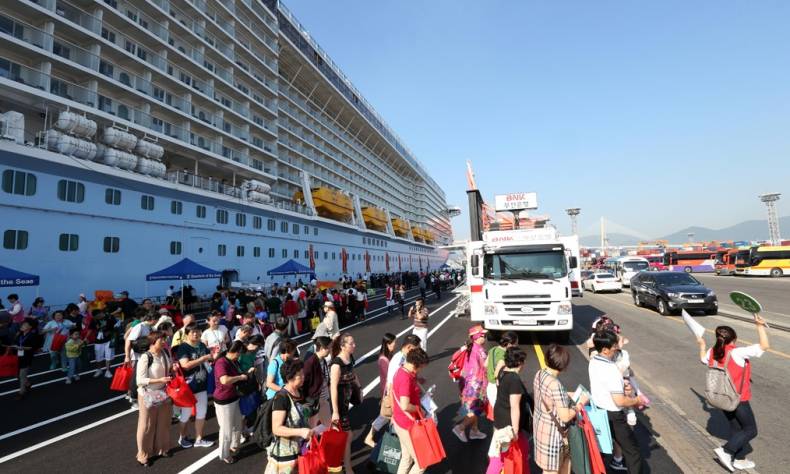
Japan Braces for Chinese Cruise Boom
Despite the China’s much-discussed economic slowdown, Chinese outbound tourists are still heading abroad in droves, with 61.9 million Chinese traveling overseas in the first half of 2015, up 13 percent year-on-year, according to the China National Tourism Association. Of the outbound destinations, Japan is becoming increasingly preferred for its luxury toilet seats and better quality rice cookers. Sure, there are other attractions, such as relaxed visa restrictions, China’s high tax on luxury goods, and the reputation of Japanese goods being of a higher quality, but these benefits must surely play second-fiddle to a toilet seat that warms and plays music.
Now imagine if China’s love of shopping junkets could be somehow incorporated into a mode of transportation that allows for a comfortable game of mahjong while providing access to some kind of smoking deck instead of cramped seats in cattle class below a puny overhead luggage compartment too small to accommodate the luxurious spoils bought duty-free? A China Dream? Not quite, but close, such is the growing popularity of the cruise vacation in China.
As with any product or service flailing in developed markets and desperate for growth, the world’s major cruise companies are now looking to Asia, and more specifically, China. Back in March, Royal Caribbean sent the state-of-the-art, 4,180-passenger Ovation of the Seas to its Tianjin home base, adding to its existing four-vessel fleet, while Carnival Corp. recently entered into a joint venture with China State Shipbuilding Corp. and sovereign wealth fund China Investment Corp. with visions of creating a multi-ship line in the future.
Japan and its many port cities is one of the primary countries set to benefit from this boom in Chinese cruise vacations (Chinese cruisers?), and the benefits for the Japanese economy are not lost on the country’s government. Enamored by the shopping prowess of the Chinese tourist (and let’s be honest, which country’s government isn’t?), the powers that be in Japan are pushing to more than double the number of cruise passenger arrivals to one million by 2020. And why not, with official estimates valuing each cruise ship passengers spending capacity at between 30,000 to 40,000 yen per port.
The problem is, for better or worse, how these spending whirlwinds might drive up anti-Chinese sentiment. It is something of a Catch-22 situation: they spend lots but end up taking everything and leaving nothing for the locals. In Hong Kong, locals often refer to visitors from the mainland as “locusts” because of their exhaustive shopping habits, and the same appears to be happening already in Japan, with passengers disembarking and tearing through local stores with unbridled enthusiasm.
The last thing that relations between these two countries needs is a bunch of disgruntled Japanese locals being inconvenienced by Chinese tourists who are there one minute and gone the next, taking with them half the town or village’s goods. These locals will then complain loudly, the media will pick it up, the Chinese netizens will respond in kind, wars of words will be waged, protests will mount, and patience will wear thin.
The above nightmare scenario can be easily avoided if the local governments of the ports to be visited realize the kinds of numbers that will be arriving and invest in the necessary infrastructure, retail and otherwise, to satisfy both locals and tourists alike, but the time to act is now. Otherwise, there could be some ugliness to come.
 Facebook
Facebook
 Twitter
Twitter
 Linkedin
Linkedin
 Google +
Google +










